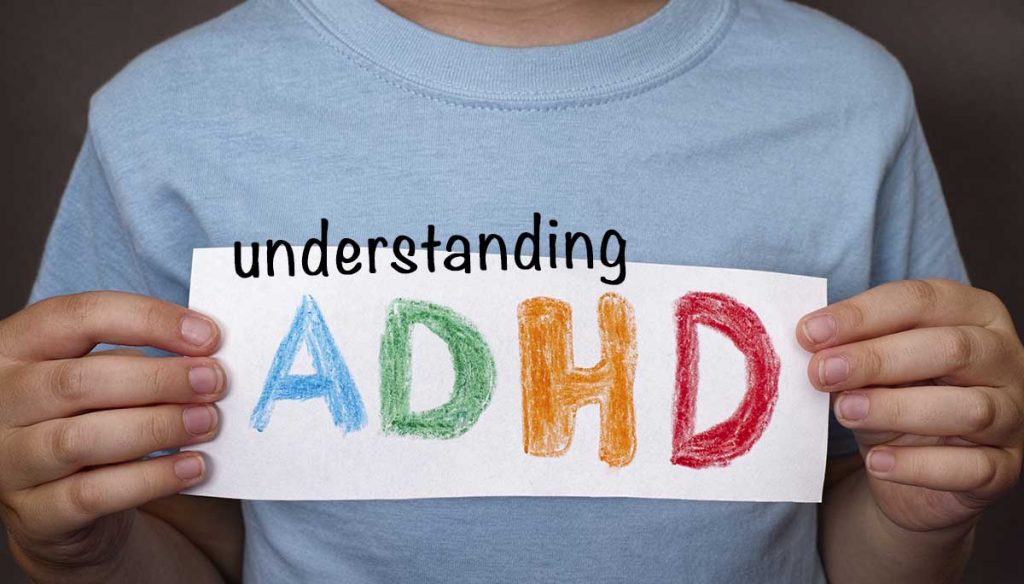By Rebecca Perkins
ADHD is one of the most common neurological disorders in the world; it is estimated to affect around 1 in 10 people worldwide. Sadly however, it is still one of the most misunderstood disorders in existence.
But what is ADHD, and why is it so misunderstood?
Well the first and most important thing to understand about ADHD is that it is real. It is not a social disorder that is brought on by bad parenting, it is not brought on by the school a child went to or the friends they played with. ADHD is a real disorder.
Just recently I saw a meme that said ‘I had ADHD until my Dad took off his belt’. It is this misguided stereotype that sadly harms so many children and adults living with ADHD.
Not only is ADHD very real, but to those who have it life can be extremely challenging. So it is absolutely crucial that we begin as a society to change this mistaken belief, so that children growing up with ADHD can get the support and understanding they need.
So what exactly is ADHD?
The problem with ADHD is that it is not as simple to understand as its name (Attention Deficit Hyperactivity Disorder) leads us to believe.
ADHD is much more than a linear disorder that goes from mild to severe, where individuals only have problems with hyperactivity or inattention.
ADHD is more like a spectrum, more like what Autism is for example. There are in fact many different symptoms and challenges and every child or adult with ADHD will struggle with different symptoms in different ways.
In other words you could potentially have four children all with ADHD and each one could have completely different challenges.
One child may struggle more with the hyperactive and impulsive side of ADHD; this child may be very fidgety, always on the go and may find sitting still in the classroom or to eat their dinner, for example, really difficult.
However, the second child may not have any problem with hyperactivity at all; this child may struggle more with disorganisation. Staying organised with anything from homework to just remembering what they need to be doing and when, could be a huge challenge for this child.
So what about child number three; well child number three’s biggest struggle could be anxiety and emotional dys-regulation. Both anxiety and poor emotional regulation are huge challenges for many children with ADHD. And as they progress through childhood and into adulthood, if they don’t get the necessary support this can cause massive problems for them in their life.
Finally child number four, this child is more like me. Their mind is always trying to think of fifteen things at once, jumping from one thought to the next, and really struggle to pay attention to any one thing; they are very easily distracted. Well, this can make life very difficult for a child especially at school.
So we know that ADHD is much more complex than we may think.
According to the DSM-V (Diagnostic and Statistical Manual of Mental Disorders) there are three types of ADHD: Inattentive, Hyperactive and Combined, which is a combination of the two.
However, ADHD is much more than those three titles would suggest. And this, along with the name Attention Deficit Hyperactivity Disorder, often leads to a great deal more misunderstandings.
Let’s look firstly at the name itself. Attention Deficit Hyperactivity Disorder.
Attention Deficit. Has someone with ADHD necessarily got an attention deficit? I certainly don’t think I have an attention deficit. I think the problem is exactly the opposite; our attention is on so many different things at once.
Hyperactivity Disorder. Well, many individuals with ADHD don’t have hyperactivity at all. This isn’t necessarily always one of the symptoms that children with ADHD struggle with. So the name in itself can be quite misleading.
As ADHD is so very misunderstood, creating awareness of ADHD, it’s true characteristics and how and why individuals with ADHD struggle, will be a huge leap forward in providing a better future for all those living and often struggling with ADHD symptoms.
There are many symptoms of ADHD that at present are unrecognised by society. Such as:
- HYPER-FOCUS
The ability to focus intensely on something that interests them or captures their attention. - EMOTIONAL DYS-REGULATION
- DIFFICULTY SWITCHING BETWEEN TASKS
- DISORGANISATION
- ANXIETY
- LOW SELF-ESTEEM
- FEAR OF BEING JUDGED / NEED TO PLEASE
- COMPETITIVENESS
- GUILT
But as well as these many challenges that those with ADHD face, there are also positive sides to ADHD.
Because of their need to please and their competitive spirits they can achieve great things.
On top of this, if you know a child with ADHD then you will realise that they can be the kindest, most loving and caring child. Children with ADHD have an incredible ability to empathise with others and will always be the first to comfort and console you when you need a hug.
Despite their many struggles and challenges, they truly are beautiful people and with the right support and understanding they can become remarkable and achieve great things for their own lives and for the lives of others.
Rebecca Perkins is the Founder of My Special Child, Rebecca is also a Writer, Presenter and Trainer, as well as being Mum to two boys, one of which has ADHD and is Intellectually Disabled. Rebecca herself also has diagnosed ADHD.
Rebecca is currently planning the inaugural Victorian ADHD Conference 2019, aimed at helping parents, carers and educators to provide the best possible future to those with ADHD.
Understanding ADHD the DVD is available now.

